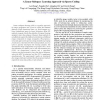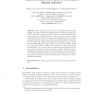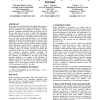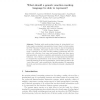432 search results - page 57 / 87 » The use of recognition in group decision-making |
112
click to vote
ICCV
2011
IEEE
13 years 11 months ago
2011
IEEE
Linear subspace learning (LSL) is a popular approach to image recognition and it aims to reveal the essential features of high dimensional data, e.g., facial images, in a lower di...
ICVS
2003
Springer
15 years 4 months ago
2003
Springer
Most approaches to detection and classification of human activity deal with observing individual persons. However, people often tend to organize into groups to achieve certain goa...
106
click to vote
KDD
2003
ACM
15 years 12 months ago
2003
ACM
In this paper, we study the problem of applying data mining to facilitate the investigation of money laundering crimes (MLCs). We have identified a new paradigm of problems --- th...
ACII
2007
Springer
15 years 5 months ago
2007
Springer
Abstract. Working with emotion-related states in technological contexts requires a standard representation format. Based on that premise, the W3C Emotion Incubator group was create...
ICCV
2009
IEEE
16 years 4 months ago
2009
IEEE
This paper presents a method to quantitatively evaluate
information contributions of individual bottom-up and topdown
computing processes in object recognition. Our objective
is...




